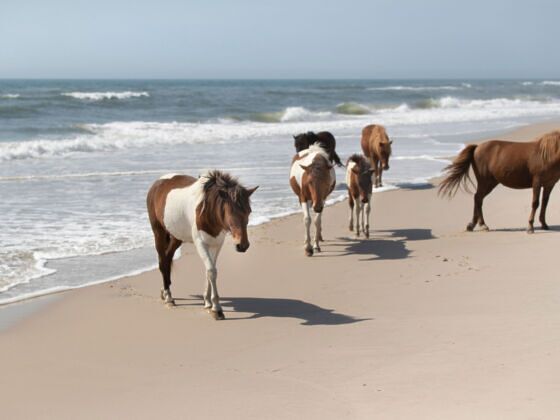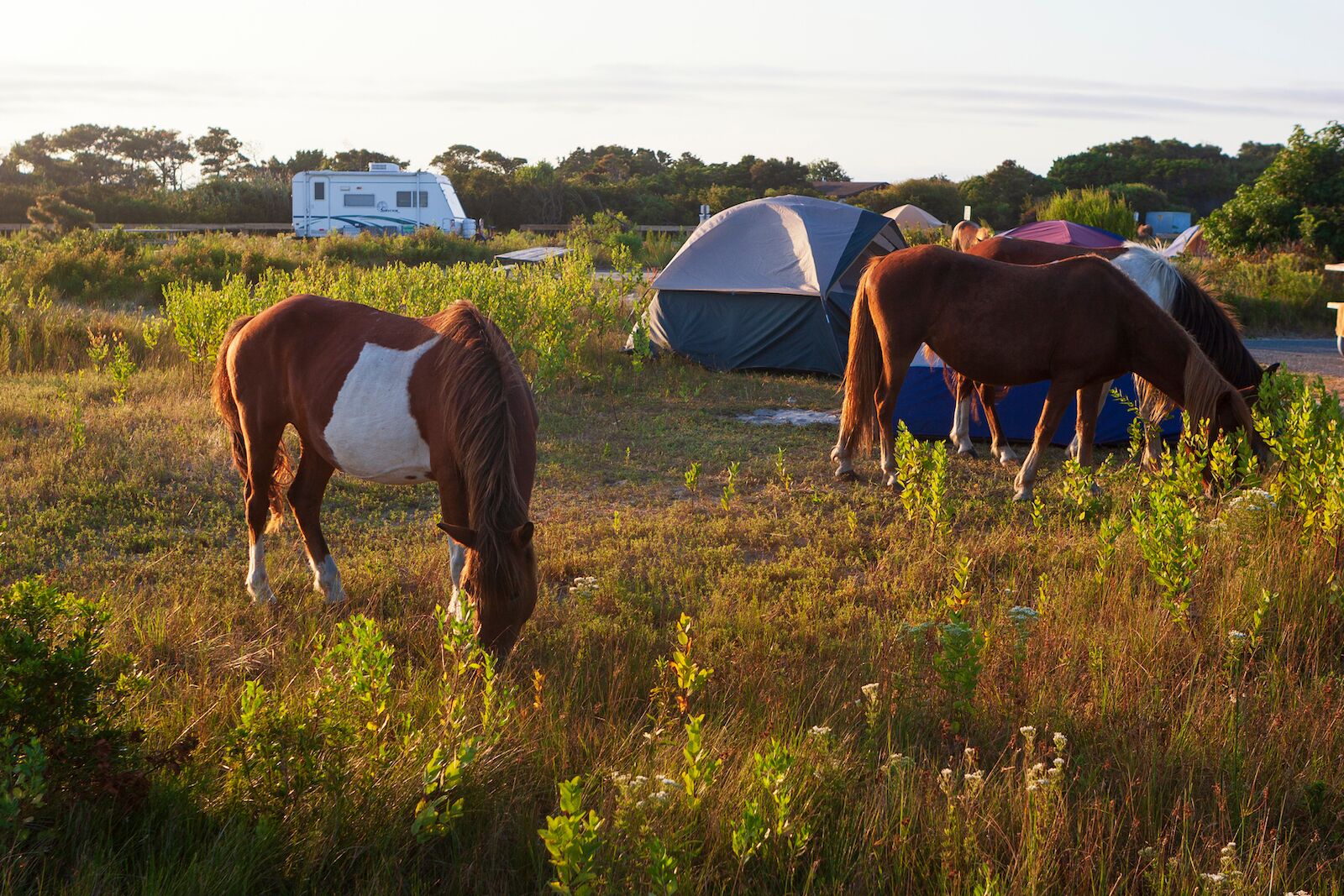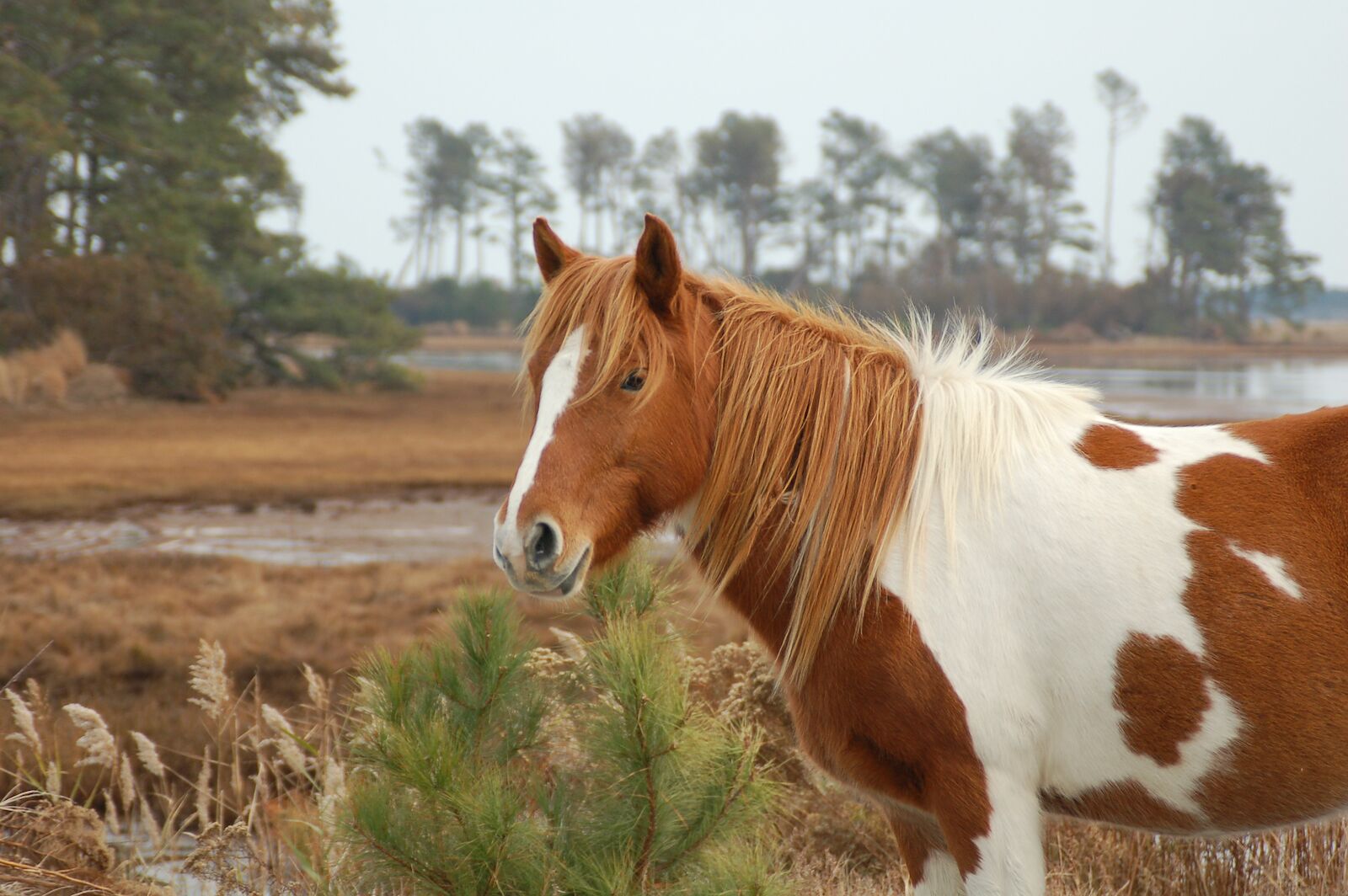Wild horses roaming free on a beach might sound like a scene off the cover of a cheesy romance novel, but on the Maryland coast, it’s a reality. The Assateague Island National Seashore, along the border of Maryland and Virginia, is part of the National Park Service and was established in 1965 to help preserve the barrier island. The northern two-thirds of the island falls on the Maryland side, while the southern third of the island is in Virginia. The seashore is home to beaches, a pine forest, migratory seabirds, eagles, and a lighthouse, but the area is first and foremost famous for its wild horses.


See Wild Horses in Maryland on This Beautiful Barrier Island
No one knows for sure how the wild horses in Maryland first arrived, but there’s a theory that they first came to the seashore on a Spanish galleon that was shipwrecked along the mid-Atlantic coast. However, the less romantic (but more probable) explanation is that they came from landowners in the 17th century who kept their horses on the island to avoid paying a fence tax.
Wherever they came from, the horses are split into two herds — one on the Virginia half of the island and one on the Maryland half — separated by a fence along the border. The Maryland herd is managed by the National Park Service, while the Virginia herd (called the Chincoteague ponies) is managed by the Chincoteague Volunteer Fire Company and live in the Chincoteague National Wildlife Refuge. The wild horses in Maryland are in Assateague State Park.
“These horses are wild,” says Liz Davis, chief of interpretation and education at Assateague Island National Seashore. “That’s what makes them special. They have lived for centuries on the island. They are resilient and adapted to life here.”
As wild horses, they are tough by necessity, having learned to survive in a harsh environment with often extreme temperatures. Seeing the wild horses in Maryland in their natural habitat is a beautiful experience that truly feels like you’ve stepped into the pages of a classic romance novel, complete with great sunsets.
How to get reach the wild horses in Maryland

Photo: nathaniel gonzales/Shutterstock
When you hear the word “island,” the first thought tends to be, “oh boy, how do I even get there?” Luckily, Assateague Island is a barrier island, meaning it’s connected to the mainland. At 37 miles long, it’s the largest natural barrier island ecosystem in the mid-Atlantic states. You can either take the Verrazano Bridge from Maryland or the John B. Whealton Memorial Causeway from Virginia. It’s less than a three-hour drive from Richmond, Virginia; DC; Baltimore, Maryland; or Philadelphia, Pennsylvania, so it’s pretty accessible no matter where you’re coming from.
Once you’re on the island, you’ll find getting around pretty easy. Though 37 miles long, it’s only a mile wide, so you’re never far from a beach. Most people explore the island by hiking, kayaking, riding OSVs (over-sand vehicles), or horseback riding (not the wild horses).
Things to know before going to Maryland’s wild horse beach

Photo: JWCohen/Shutterstock
Camping along Assateague Island National Seashore
This isn’t the Outer Banks of North Carolina. There are no hotels here, and Airbnb options are few and far between, which means you’ll likely be camping. Car camping sites are available by online reservation, and weekend and holiday slots get booked rather quickly. Backcountry camping is also available, as as is beach camping — sometimes with views of the wild horses as they graze.
The three main campgrounds are Oceanside Campground, Bayside Campground, and the Group Campground. Reservations are required from March 15 through November 15.
Don’t feed the horses
It’s important to remember that the wild horses in Maryland are not domesticated horses. They’re wild, and potentially dangerous to visitors. And visitors can be dangerous to the horses. “Keep at least 40 feet away,” Davis says.

Photo: CRScalise/Shutterstock
To avoid getting bitten or kicked, do not feed or pet the horses. Rangers can ticket you for getting too close to them. Horses might also get sick from human food, so it’s best to play it safe and avoid feeding them.
Bring binoculars
There are approximately 300 ponies and horses living on the island, and you’ll see them all over, from the campgrounds to the marshes to the side of the road. Since you can’t get too close, bring a pair of binoculars to enjoy them from afar.
Things to do on Assateague Island
The wild horses are certainly the main draw of Assateague Island, but the area is also well-known for birding. Several bird species call the island home, including the great blue heron, snowy egret, red-winged blackbird, brown pelican, American oystercatcher, and a variety of gulls, waterbirds, and raptors. The threatened piping plover birds also make their nests here.
If you prefer to take a more active approach to your wildlife experience, saltwater fishing is another popular island activity. Anyone in possession of a fishing license is free to cast a line and hope for a bite from kingfish, flounder, striped bass, bluefish, or drum. While you can fish from a kayak while exploring the island, surf fishing from the beach is the most popular approach.
The island is more than just wildlife, too. On the Virginia side of the island you’ll find the Assateague Lighthouse, a 142-foot tall lighthouse built in the mid-1800s that has panoramic views of Assateague and Chincoteague Island from the top. It’s open on weekends from April through November, between 9 AM and 3 PM, free of charge.